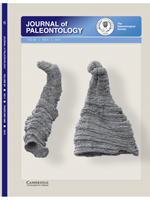The Cretaceous Period (145–66 Ma) consisted of several oceanic anoxic events (120–80 Ma), stimulated by global greenhouse effects. The Oceanic Anoxic Event 2 (OAE2) occurred worldwide from the late Cenomanian to the early-middle Turonian, causing a significant faunal turnover, mostly in marine biota, pushing some species to the brink of extinction. Some organisms also underwent morphological changes, including reduction in size. This anoxic event drove other changes—e.g., in habitats or strategy of life. We show that stalkless crinoids (comatulids) from the Turonian of Poland adapted to unfavorable environmental conditions by reducing their body size. Furthermore, at the moment when environmental factors became favorable again, these crinoids regained their regular (pre-event) size. This phenomenon likely illustrates the so-called dwarfing mode of the Lilliput effect.
How to translate text using browser tools
1 November 2015
The Lilliput effect in crinoids at the end of the Oceanic Anoxic Event 2: a Case study from Poland
Krzysztof R. Brom,
Mariusz A. Salamon,
Bruno Ferré,
Tomasz Brachaniec,
Krzysztof Szopa
ACCESS THE FULL ARTICLE

Journal of Paleontology
Vol. 89 • No. 6
November 2015
Vol. 89 • No. 6
November 2015




